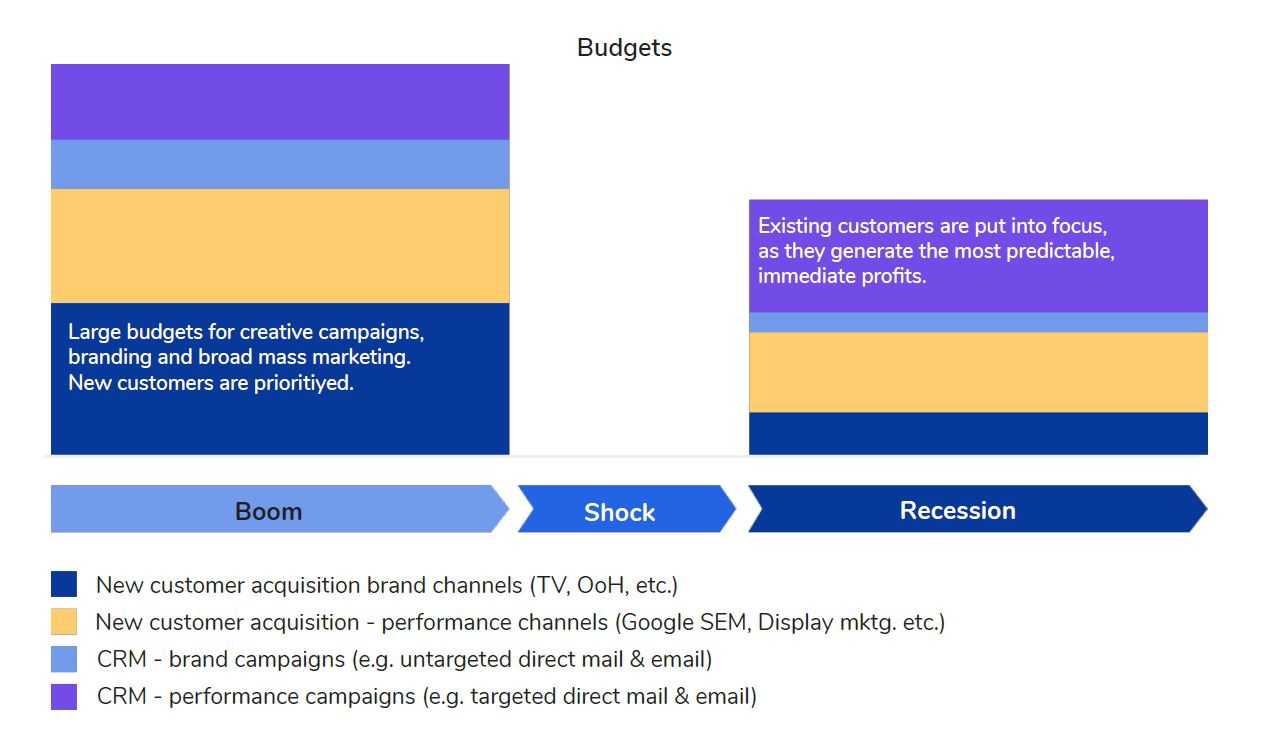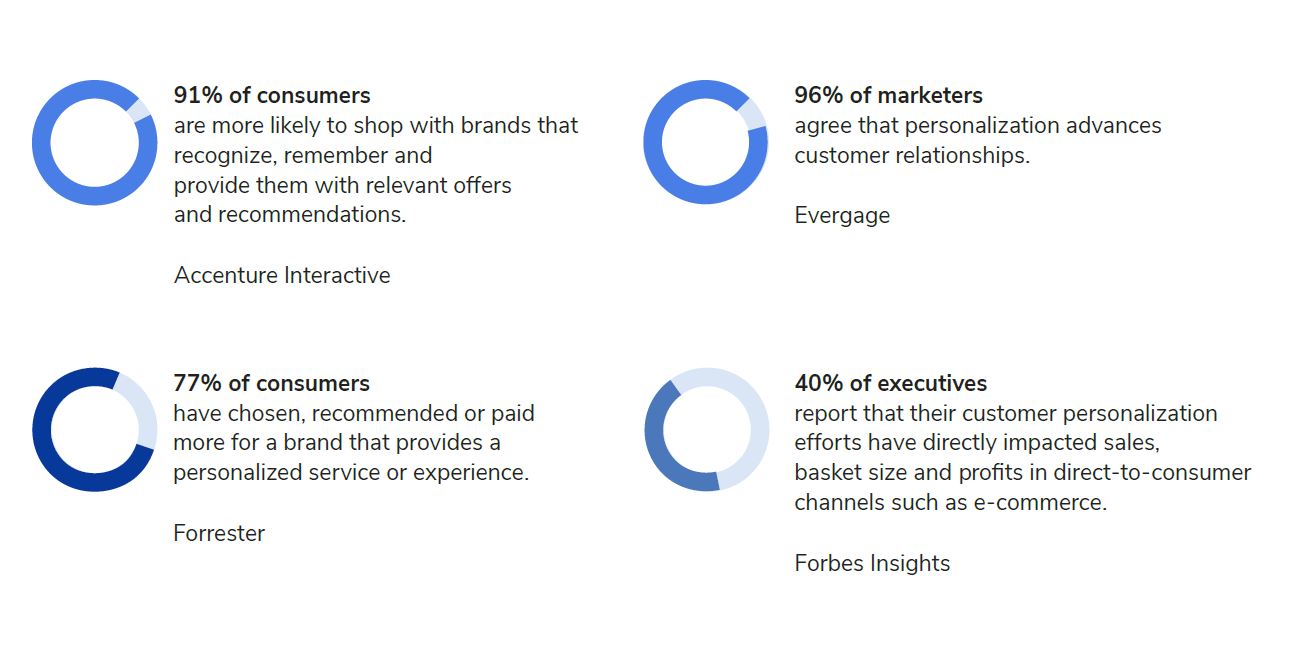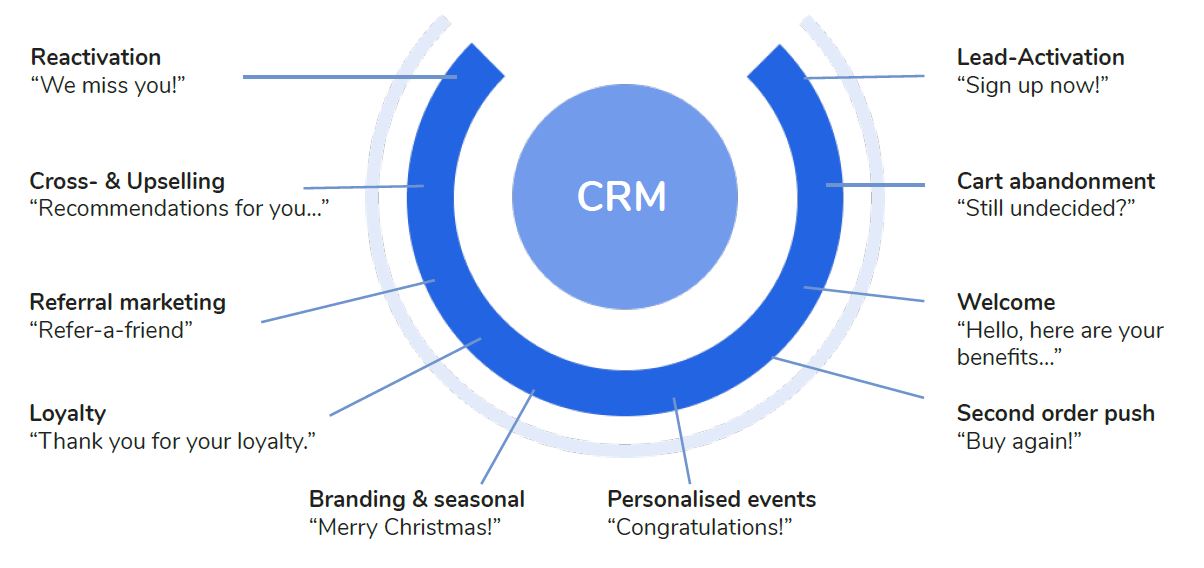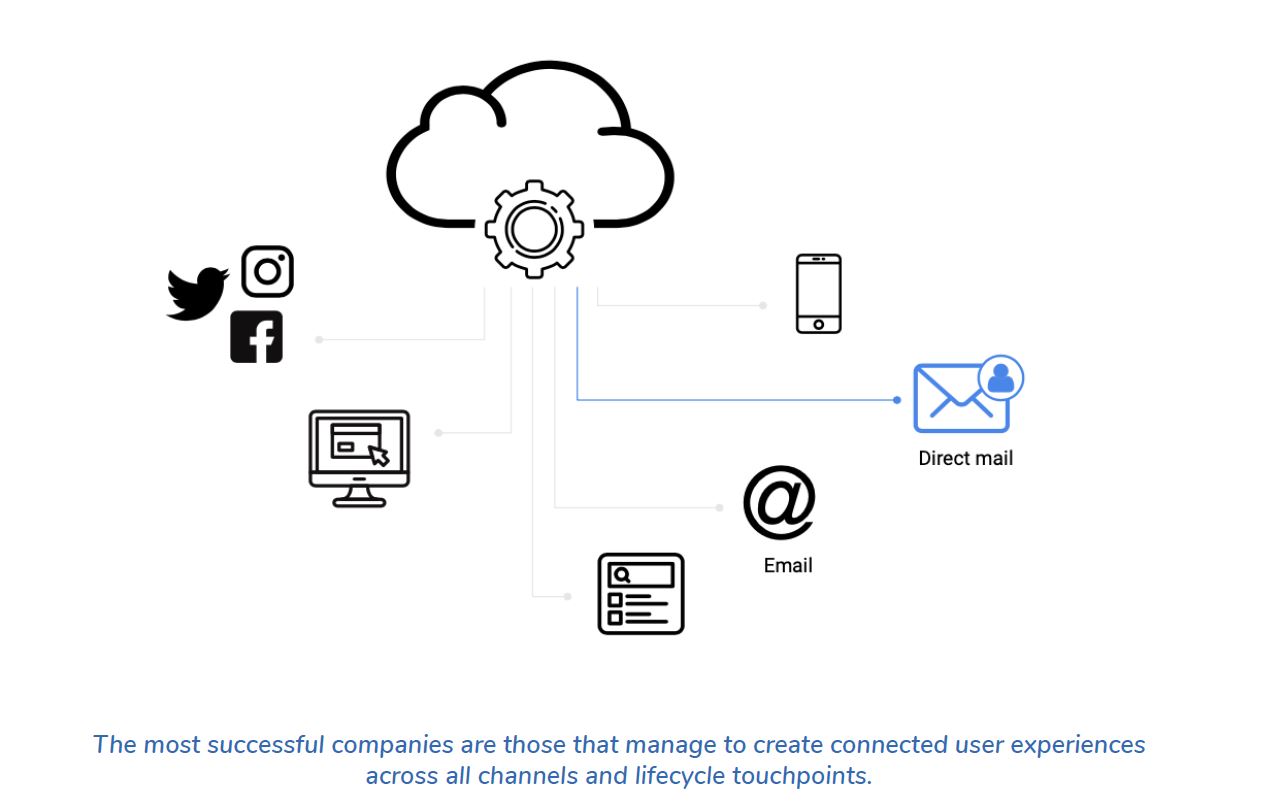Marketing, CRM and direct mail after COVID-19
This guest blog post has been written by Robert Rebholz, the co-founder and Managing Director of optilyz, a leading direct mail software provider. At optilyz, he works with some of the biggest and most successful companies in Europe.
Customer Experience, Effectiveness, Strategy

There is no "back to normal"
At this point, we all know that what we are experiencing will not end like a bad dream. There will be no waking up and going back to “normal”. From an economic point of view, this crisis will bring many companies to the edge and push some over. We are moving into a global recession and we will all need to adjust to that.
A "wait and see" approach will not work.
The most successful companies after the lockdown will be those that review their marketing channels, tools, processes and logics and assess what they need to change to succeed in the upcoming recession. Next to staying alive right now, companies will need to figure out how they can adapt in a recession and how they can move their business ahead.
At optilyz, we work with over 300 companies ranging from FinTech to traditional retail. The following insights come from our discussions with many decision-makers in marketing, some of whom spent many sleepless nights assessing what all this means for their teams, their companies and, of course, their customers.
Adjust the way you communicate
What is important now is that we adjust to a changing environment. Many amongst us are experiencing fear and even panic. We don’t know how this crisis will evolve and what it means for us professionally and personally.
In marketing, we cannot ignore the world around us and just keep blasting out our usual messaging. The following principles are crucial right now and will remain important for the next few months:
- Take your customers’ worries seriously. “I think they’re exaggerating” is not a viable option. Show them you care.
- Be optimistic. Positive messaging is what customers need and what they are looking for. Give hope.
- Address what is happening. Ignoring what is going on around us will not be appreciated. Your messages should take the current crisis into account.
- Be proactive and honest. Talk to your customers and address any of their worries. If you’re facing interruptions or delays, tell them early!
- Act fast. Everything is evolving rapidly - so should your messaging. What was okay today may not be tomorrow.
- Add value. Communication solely for the sake of commenting on the situation may backfire. Make sure your messages are relevant and matter.
Customers will be watching how you behave even more closely than ever.
Review your focus
A recession will require companies to think even more about cost and immediate impact. This will impact how we assess projects and priorities. As we have to plan for potentially many quarters of low(er) revenue and an overall reduction in demand, companies will need to review their marketing very carefully.

Most companies we have talked with are currently splitting their marketing budgets into “optional” and “must-have” categories. Anything without an immediate and measurable profit contribution (such as out-of-home advertising) is considered “optional”, is eliminated in the short term and will be significantly reduced during the recession. Anything that directly helps stabilise revenue is classified as a “must-have”.

As total marketing budgets decrease, attention will soon focus on CRM, which can generate more predictable and immediate revenues than broader marketing efforts. This is not a new trend. Customer acquisition has become much more difficult and expensive over the last few years. The most successful companies were those that managed to not only win one-time-customers, but actually turn them into loyal shoppers. High customer acquisition costs meant that one-time-customers were mostly not profitable.
CRM teams will be champions of the recovery, as they will generate the most immediate and predictable profits from existing customers.
Plan your journey to recovery
We believe that we are now facing three distinct phases from a marketing standpoint. The current crisis creates “winners” and “losers” unlike anything we’ve ever seen. The impact on these businesses is not temporary and will change many industries forever.

It is crucial that companies understand which phase they’re in and behave accordingly. As we for example move from “shock” to a “rebound”, customer sentiment will change drastically. Those companies that understand this best and act on it first will be the ones that are not only seen in a more positive light but will also benefit financially.
Agility and flexibility will play a more important role in the world we face.
Rethink customer relationship management
Customer Relationship Management (CRM) today is still heavily focused on email marketing (which is already somewhat automated) and direct mail blast campaigns to large audiences (which are typically run via archaic CSV files sent to printers). This needs to end. CRM is increasingly seen as a key success driver with massive potential, so its requirements need to rise to the occasion.
CRM will become more connected and performance-driven.
The upcoming recession will demand the following of CRM teams:

Managing cost
Marketing investments and campaigns will be assessed more carefully than before. Budgets will be allocated more cautiously.
- Can we use that money for something better or even save it?
- What is the return on investment and is there a more efficient way to do this?
Reducing effort
As resources become more scarce (and companies save money on agencies and freelancers), companies will re-evaluate their former processes.
- How much time will this take and is it even necessary?
- Are there easier ways to do this and is there software to help with this?
Boosting immediate revenue
A campaign’s impact needs to be swift and substantial to be justified. A vague “this helps our brand” will
no longer suffice for most campaigns.
- How profitable is this and how immediate and scalable are those profits?
- Are there ways to increase campaign performance, e.g. via software?
These questions will change the focus of CRM and shift priorities. This will especially change direct mail as a CRM channel, where the biggest performance improvements and potentials can be found.
Revolutionise your approach to direct mail
Direct mail will play a crucial role going forward: As a CRM channel, it enables companies to reach almost all their customers directly in their homes and generates conversion rates of 4-10%*.
*Based on the optilyz database of >300 companies we work with and from whom we get conversion-feedback on a regular basis (e.g. as part of their onboarding, pilot campaign recap and then in regular intervals every 3-6 months). These companies come from all kinds of industries and have between 250k - 20 million customers.
With reduced budgets and an increased need to generate profits, it is key to reassess how to use the channel. Ask ‘how can my brand communicate more effectively using mail?’
Could you consider using enhanced targeting to ensure your message is relevant to the audience?
An assessment of the channel may lead to a shift in perspective and some changes. Direct mail will no longer be seen as “different” or isolated from other channels. The same things that work in email marketing will drive direct mail performance in the future.

Companies aiming to make direct mail a key success factor in CRM will have to run it like an online channel, in a software-enabled and performance-driven manner:
- Event-triggered mailings instead of mass mailings. Mailings as part of cross-channel customer journeys (and thus aligned with online marketing)
- Buyer persona-specific and hyper-personalised mailings with customer-individual content instead of one-to-all communication
- Enhanced A/B-testing and continuous optimisation.

Customer journey mailings, for example, generate 15-30% higher conversion rates than regular mass mailings. A mailing based on the lifecycle stage of a customer is perceived as far more exclusive and personal. This not only boosts conversion rates but also increases loyalty. There is a broad range of high-performance lifecycle touchpoints.

But that’s not all. While personal touchpoints already have massive benefits, the best performing campaigns are those with hyper-personalized content. “Content is king” and this applies to direct mail just like any other channel. Since companies see massive performance uplifts in email and on-site marketing, we must ask ourselves: why isn’t this the standard for direct mail?

Product recommendations in direct mail typically increase conversion rates by 20-40%. Now let’s run the numbers and assume a company…
- sends 1 million mailings
- generates an average order value of €50
- with a conversion rate of 4%
Now let’s see how a modern approach to direct mail could impact a campaign. Based on our work with over 300 companies, the following conversion rate increases can easily be achieved:
- 13% via customer journey mailings
- 3% via better cross-channel coordination
- 9% via buyer persona-specific mailings
- 16% via hyper-personalised content (e.g. product recommendations)
- 4% via enhanced A/B testing.
These effects boost revenue by over 50%. That’s €1 million in additional revenue!

Think about the long term
As we freeze budgets and prepare for the worst, it is important not to ignore important projects and the goal of customer centricity. Companies that invest in marketing clouds or customer data platforms now stand to reap great benefits. The most successful companies will be those that have a marketing tech stack in place to properly run cross-channel campaigns in a software-enabled manner.
Platforms like the Salesforce Marketing Cloud, Emarsys, and DynaCampaign enable CRM teams to take cross-channel marketing to the next level. These solutions also make AI accessible for all channels, e.g. to provide product recommendations that are more relevant.

Sending an email to welcome a new customer or to cross-sell just won’t cut it anymore. These touchpoints and messages need to be aligned across all channels.

The rise of marketing clouds and customer data platforms will continue. They will enable companies to link all channels and to leverage all available data. The result? A more personalized and thus more powerful customer interaction.
Add-ons like optilyz will be activated in those solutions and enable companies to run cross-channel campaigns that include direct mail.
Remain optimistic
What we’ve learned from our conversations with marketing leaders is that nearly everyone is struggling with the current situation. Of course, some are hit harder than others. Tourism is struggling the most while our clients in the fashion industry are also under great pressure. Yet we remain highly optimistic about the future of business. Those companies that embrace the current challenges fastest and most rigorously will prevail and be able to thrive again, even through a recession.


